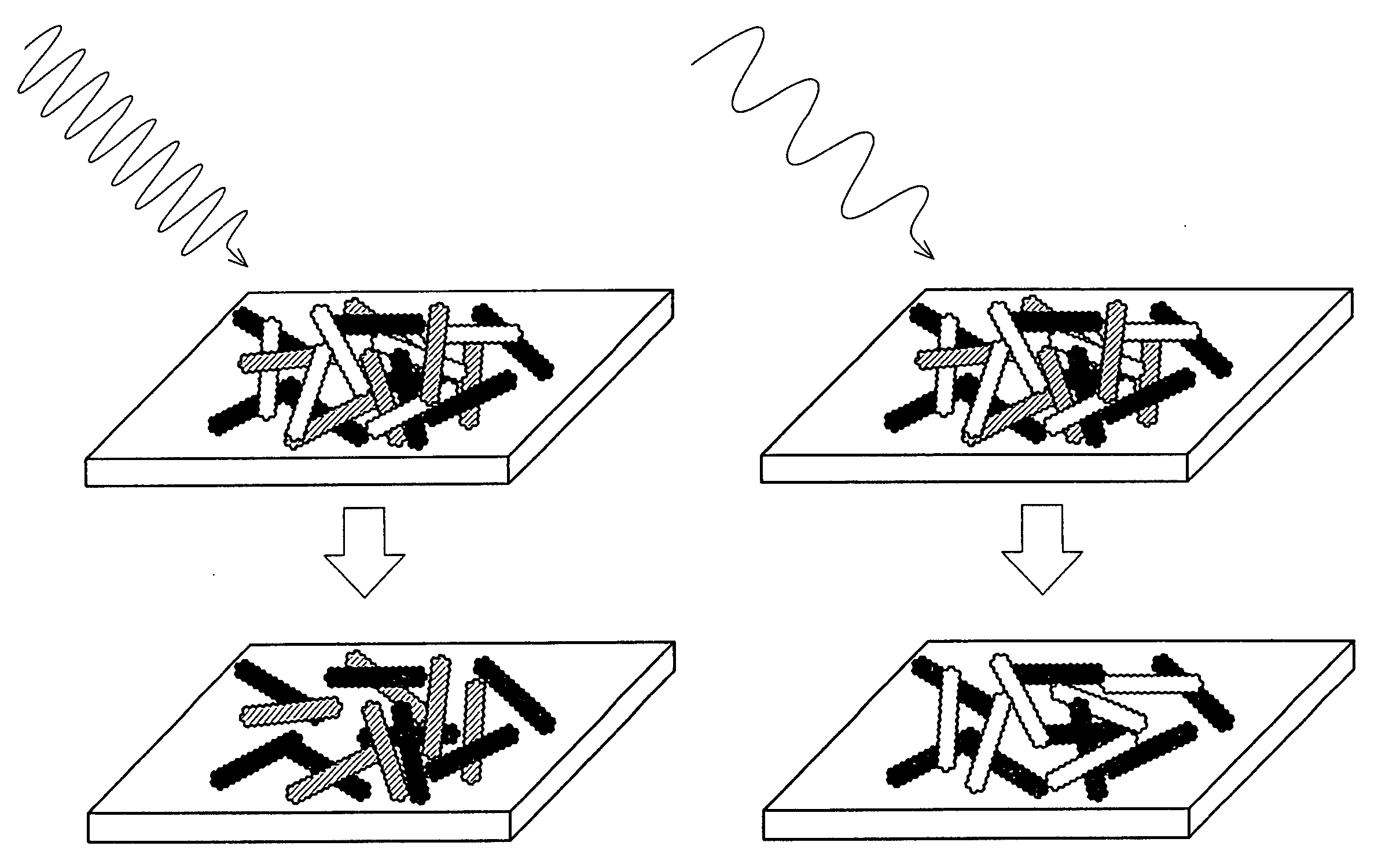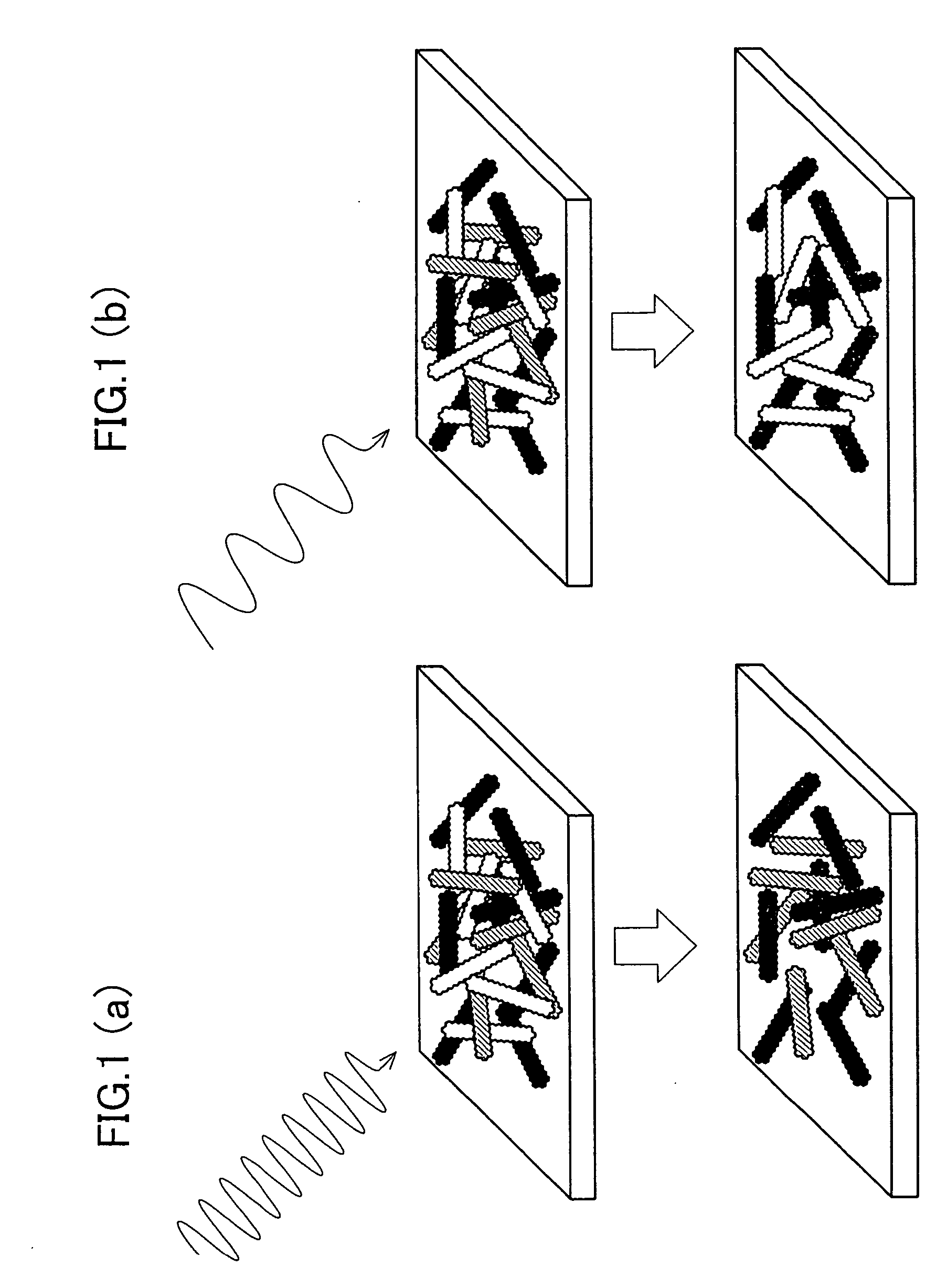Method for controlling structure of nano-scale substance, and method for preparing low dimensional quantum structure having nano-scale using the method for controlling structure
a nano-scale substance and structure technology, applied in the field of controlling structure of nano-scale substances, can solve the problem of no method that selectively obtains or removes carbon nanotubes of a specific structure, and achieve the effect of increasing the intensity of electromagnetic waves
- Summary
- Abstract
- Description
- Claims
- Application Information
AI Technical Summary
Benefits of technology
Problems solved by technology
Method used
Image
Examples
examples
[0038] The following will describe Examples of the present invention in detail based on Experiment 1 through Experiment 3. It should be noted here that the invention is not limited by the following description.
experiment 1
Single-Walled Carbon Nanotube
[0039] A sample single-walled carbon nanotube was synthesized with ethanol that has been applied on a silicon (Si) substrate coated with an iron-containing catalyst. The reaction was performed at 900° C. using a thermal CVD method.
[0040] The sample single-walled carbon nanotube prepared in the experiment was observed under SEM. FIGS. 4(a) and 4(b) are resulting SEM images. As shown in FIG. 4(a), a growth of SWNT was confirmed on the substrate. FIG. 4(b) is a magnified view of FIG. 4(a).
[0041] A Raman spectrum of the sample was also measured. FIG. 5 represents the result. As the excited light source, an Ar ion laser (λ=514.5 nm) was used.
[0042] As shown in FIG. 5, the spectrum in the high frequency range had two large peaks, called G band and D band. The G band in the vicinity of 1590 cm−1 originates from graphite (or more accurately, oscillation in the hexagonal lattice of the carbon atoms). The D band in the vicinity of 1350 cm−1 originates from def...
experiment 2
Excited Wavelength Dependency of Raman Spectra
[0043] The sample single-walled carbon nanotube obtained in Experiment 1 was irradiated with laser beams (energy density of 1 kW / cm2, wavelengths of 514.5 nm, 488.0 nm, and 457.9 nm) in an atmosphere, and Raman spectra were measured. As the light source, an Ar laser was used. FIG. 6 shows the results. The Raman spectra shown in FIG. 6 respectively corresponds to, from the top, the wavelengths of 457.9 nm, 488.0 nm, and 514.5 nm of the irradiating laser beams. As can be seen from FIG. 6, the Raman spectra of different wavelengths had peaks at different positions. This indicates that single-walled carbon nanotubes with different densities of states are resonating with the different wavelengths of the irradiating laser beams.
PUM
| Property | Measurement | Unit |
|---|---|---|
| outer diameter | aaaaa | aaaaa |
| outer diameter | aaaaa | aaaaa |
| particle size | aaaaa | aaaaa |
Abstract
Description
Claims
Application Information
 Login to View More
Login to View More - R&D
- Intellectual Property
- Life Sciences
- Materials
- Tech Scout
- Unparalleled Data Quality
- Higher Quality Content
- 60% Fewer Hallucinations
Browse by: Latest US Patents, China's latest patents, Technical Efficacy Thesaurus, Application Domain, Technology Topic, Popular Technical Reports.
© 2025 PatSnap. All rights reserved.Legal|Privacy policy|Modern Slavery Act Transparency Statement|Sitemap|About US| Contact US: help@patsnap.com



